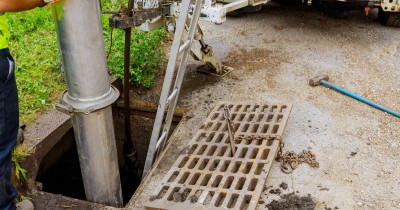What is Sewage Treatment? | Ultimate Guide for Sewage Treatment
After the wastewater has been collected, it is sent to a sewage treatment plant. The first step in the process is called primary treatment, which removes about 60% of the organic matter and about 30% of the suspended solids. The next step is called secondary treatment, which removes more than 90% of the organic matter and suspended solids. This leaves a sludge that can be used as fertilizer or fuel. Finally, the tertiary treatment removes any remaining pollutants by using different processes like chemical addition or biological filtration.
A sewage treatment plant usually consists of four basic parts: a settling tank (primary), aeration tanks (secondary), clarifiers (tertiary), and sludge digesters (sludge).
Why Do Communities Need Sewage Treatment?
I. Sewage is a mixture of human waste, water, and other substances that are discharged from a building or group of buildings into a sewer or septic system.
II. Sewage treatment is the process of removing contaminants from wastewater to produce environmentally safe treated wastewater effluent that meets the requirements for discharge to surface waters, groundwaters, or reuse.
III. The term wastewater can be used to refer to both the liquid and solid material (wastes) which may be treated by a sewage treatment plant.
IV. Liquid waste is primarily sewage, greywater, and blackwater; solid waste is typically residential garbage or commercial trash disposed of in a sanitary landfill.
V. A sewage treatment plant removes organic and inorganic substances, pathogens, and other suspended materials from wastewater.
VI. Wastewater is the waste that results after any process of making or producing goods or services; it is water with wastes and other pollutants added to it
VII. The process of treating sewage to produce environmentally safe purified water for discharge into surface waters
Different Types of Sewage Treatment Methods
Sewage treatment is the process of removing pollutants from wastewater so that it can be safely released into the environment.
There are four main types of sewage treatment methods: wetland and open pond systems, lagoon system wastewater treatment, activated sludge wastewater treatment and trickling filter system wastewater treatment.
The first three methods are all biologically-based. The last one is a mechanical method that passes water over a series of screens to remove solid particles.
Filtration- The process begins by passing water over a series of screens to remove solid particles first three methods are all biologically-based. The last one is a mechanical method that passes water over a series of screens to remove solid particles.
How Wastewater Treatment Works at Home
It is important to note that septic tanks should be emptied on a regular basis, and the tank and leach lines inspected. These inspections should be performed by a professional because they will spot any potential problems before they become serious. Septic tanks are made of heavy-duty, coated fabric and are best suited for residential use. They usually have a liner that is made out of plastic or coextrusions, which do not require periodic inspection or cleaning.
The Benefits of a Sewage Treatment System for Homeowners
A sewage treatment system is an essential component of a healthy home. It protects the environment and improves the quality of life for people.
The use of a sewage treatment system for homeowners has many benefits. Firstly, it can prevent potential health problems such as food poisoning and waterborne diseases. Secondly, it can reduce the amount of waste that goes to landfill sites and has a positive impact on the environment. Finally, it can save money on water bills by reducing water usage and preventing leaks in pipes.


